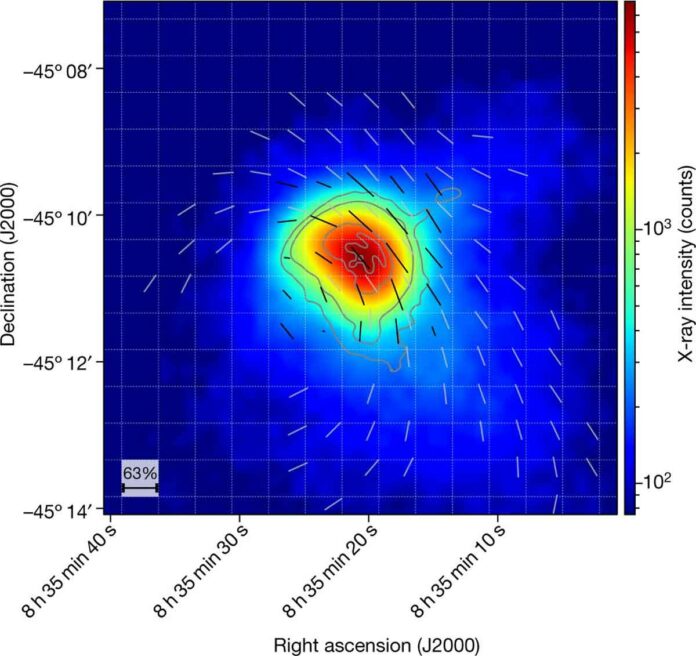An international team of space scientists has imaged the magnetic field that exists in the Vela pulsar’s acceleration zone. The group described how they used data from NASA’s Imaging X-Ray Polarimetry Explorer (IXPE) mission to obtain indirect imaging of the nebula’s magnetic field in their paper. The paper is published in the journal Nature. In the same journal issue, Samar Safi-Harb of the University of Manitoba published a News and Views piece explaining the background history of the study of the death of massive stars and the work done by the team on this new effort.
Previous research has revealed that when massive stars die, they explode as supernovae. The core is then transformed into a pulsar. It is a very small and rapidly rotating star that is highly magnetised. Pulsars are roughly shaped like doughnuts and their magnetic fields produce gas clouds around them known as nebulae. An acceleration zone exists in nebulas, where material accelerates as it is pushed by the pulsar wind. The magnetic field associated with the acceleration zone of a pulsar known as Vela was imaged in this new effort.
Of course, imaging a magnetic field directly is impossible because it is not visible. Astronomers instead use light emitted by particles in the process of being accelerated to create images of one. As particles’ speeds increase, magnetic fields force changes in their paths and produces such light. Previous research has shown that the photons emitted tend to vibrate in only one direction which is perpendicular to the magnetic field. That is, measuring the direction of the vibration can lead scientists to the polarisation of the emission. It will reveal the magnetic field’s direction.
The researchers were able to detect the polarisation from Vela using data from IXPE in this new effort. They were able to create images describing how the magnetic field generated by VELA lights up the area around it, including the impact of the termination shock. The images are said to be symmetrical and to have a highly ordered structure.

